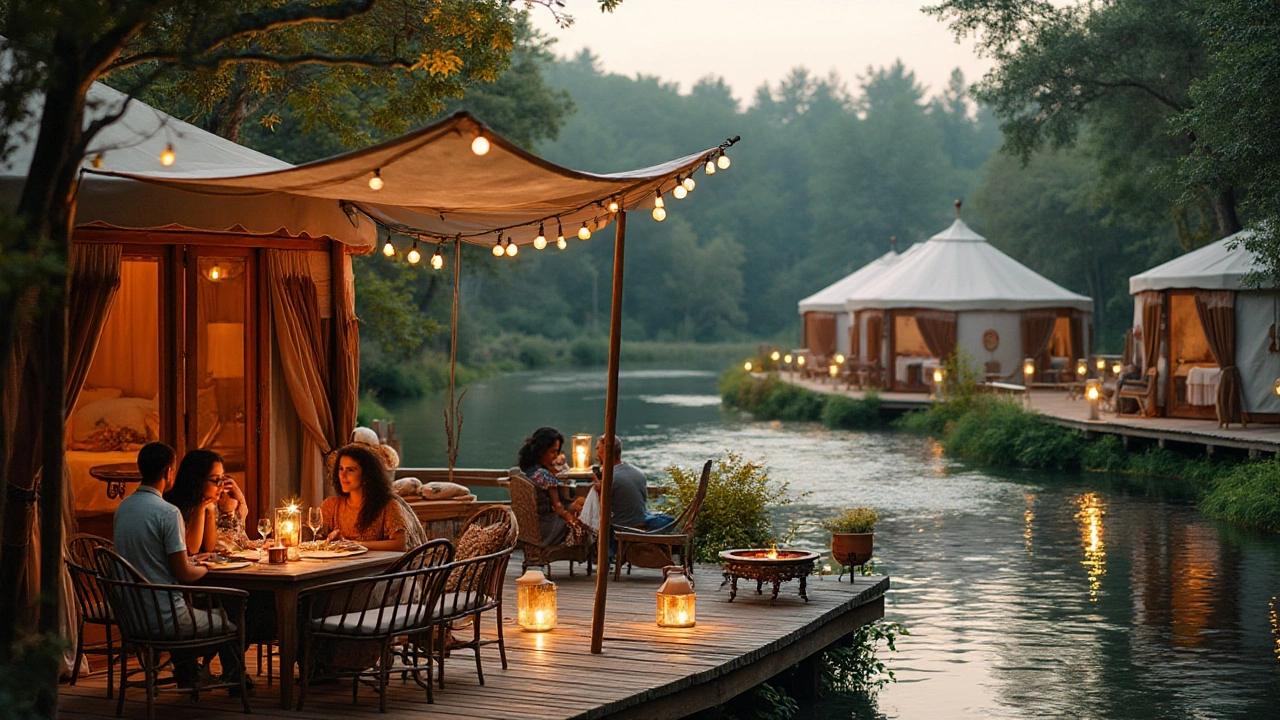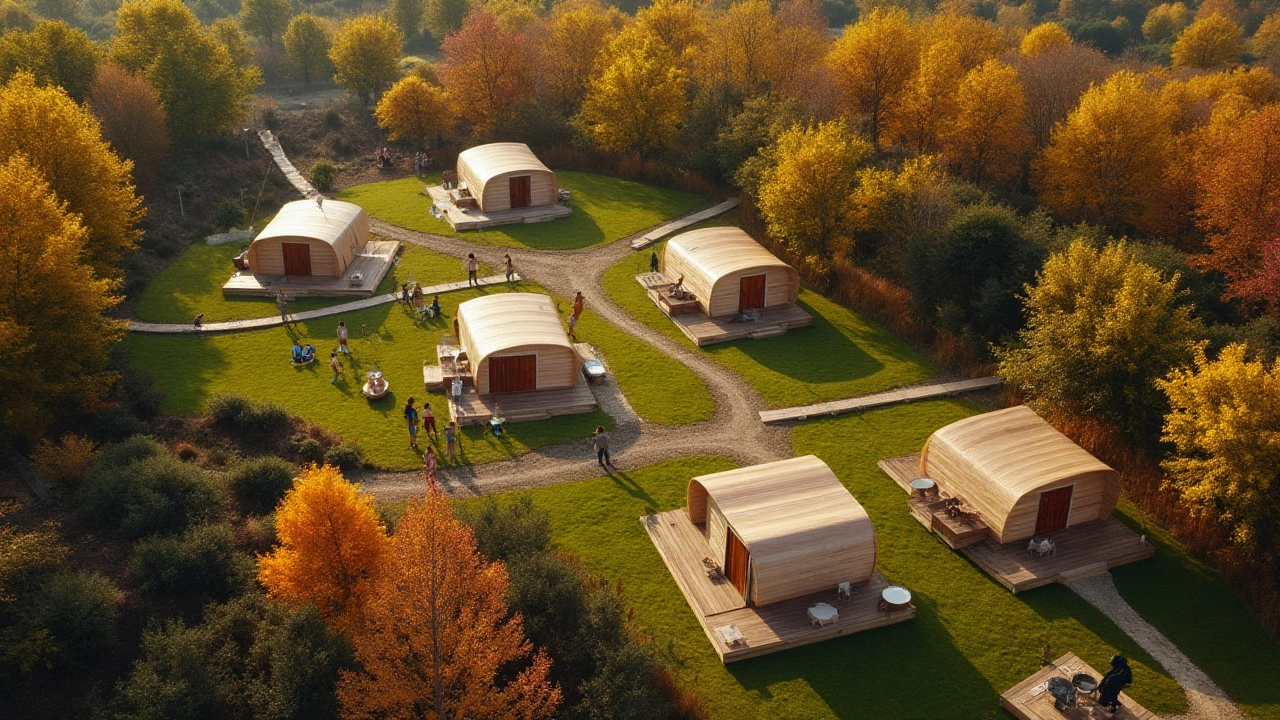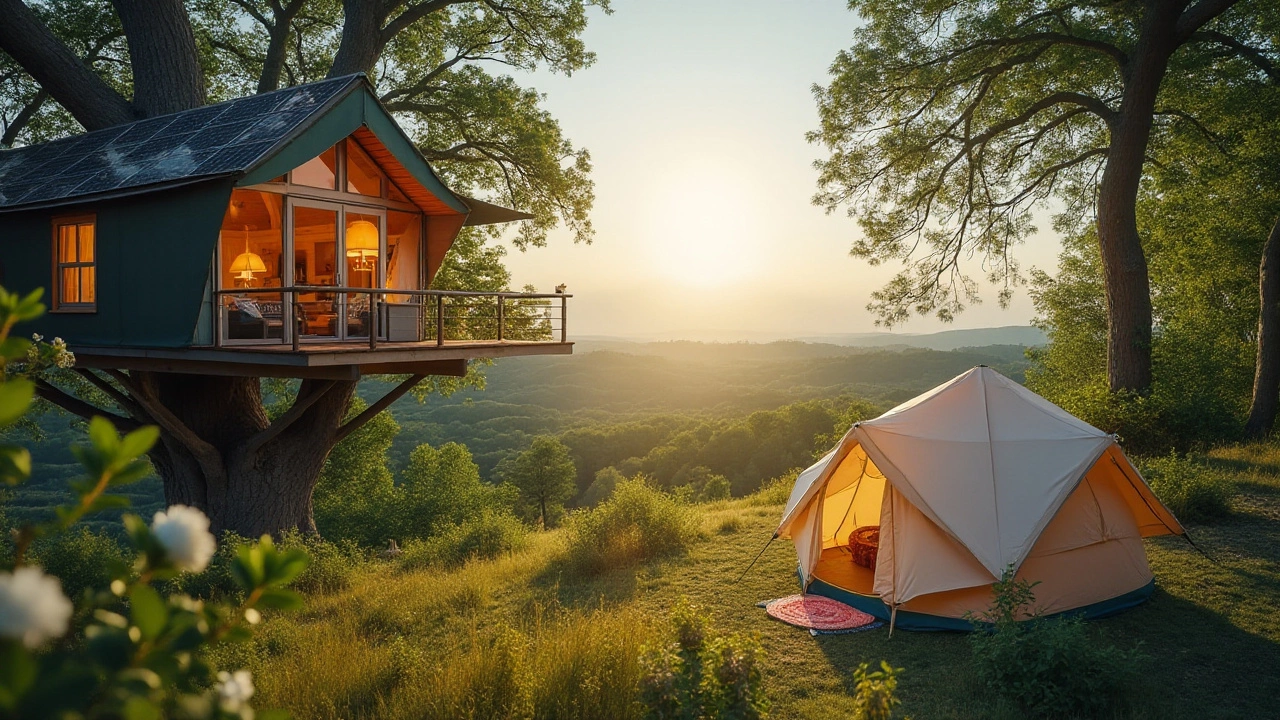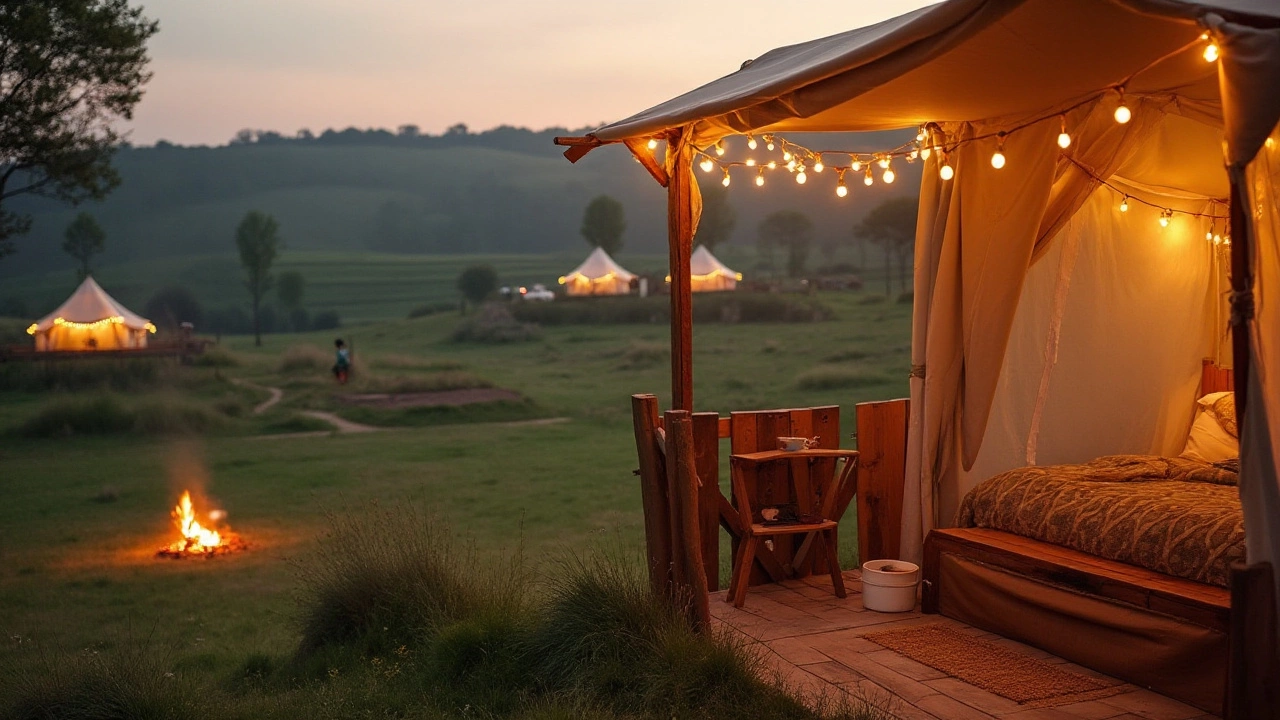For many, the lure of the great outdoors is irresistible. It offers a retreat from the everyday hustle, a chance to unwind under the stars, and a peaceful break amid nature's wonders. But the way we choose to experience this outdoor escape can vary greatly. Enter the debate: glamping or camping?
While camping relies on the classic setup of tents, sleeping bags, and campfires, glamping takes a more luxurious route. With amenities like comfortable beds, electricity, and at times, even Wi-Fi, it's a way to enjoy nature with added comfort. But with luxury comes cost. So, is glamping more expensive than camping, and if so, is it worth the extra expense?
In this exploration, we delve into the financial side of both experiences. We'll weigh the unique aspects of glamping—like plush bedding and gourmet meals—against the rustic simplicity of pitching a tent in the wild. For eco-conscious travelers, it's not just about comfort but also environmental impact, something both glamping and traditional camping offer in different ways. Join us as we navigate through the costs and benefits, and see what suits your next adventure best.
- The Basics of Glamping and Camping
- Comparing Costs: Glamping vs. Camping
- The Eco-Friendly Angle
- Tips for a Memorable Outdoor Adventure
The Basics of Glamping and Camping
When it comes to enjoying the great outdoors, two popular pursuits stand out: camping and glamping. Each offers its unique way to connect with nature, yet they cater to different tastes and preferences. Camping, in its essence, is all about immersing yourself in nature with just the basics. It often involves pitching a tent in a serene landscape, cooking over a fire or portable stove, and embracing the raw beauty of the natural world. Essential gear might include a sleeping bag, a camping stove, and perhaps a cooler for perishables. For many, this minimalist approach enhances the experience by stripping away the luxuries of modern life.
In contrast, glamping - a portmanteau of "glamorous camping" - redefines outdoor experiences with a touch of extravagance. Imagine luxurious yurts, safari tents, or treehouses adorned with plush bedding, electricity, and sometimes en-suite bathrooms. There might be communal kitchens offering chef-prepared meals or the convenience of indulging in a hot outdoor shower. Glamping seamlessly marries the thrill of the wild with the comforts of home. According to a study by the American Glamping Association, the popularity of glamping has surged by over 45% in the last five years alone. This trend underlines a growing demand for travel experiences that do not compromise on comfort.
"Glamping is not just about sophisticated accommodations, but also about offering unforgettable outdoor experiences," says Lisa Goldstein, a travel expert at the National Outdoor Association. "It's perfect for those who crave nature but still enjoy a good night's sleep on crisp linens."
While both camping and glamping offer an opportunity to disconnect from the hustle and bustle of city life, they serve different kinds of adventurers. Traditional camping might appeal more to purists who enjoy the challenge of setting up camp and cooking with limited resources. On the other hand, glamping delivers an accessible escape for those who appreciate nature's beauty yet still treasure comfort and amenities. Both have their place and can provide memorable ways to explore the outdoors.
Whether you choose the earthy simplicity of a tent or the luxurious allure of a glamp site, the key lies in what you seek from your adventure. Are you prepared to forego comfort for a more rugged experience, or is blending nature with luxury more your style? The choice is yours and the options, as varied as they are, promise to turn your wilderness adventure into an experience worth remembering.

Comparing Costs: Glamping vs. Camping
When it comes to experiencing the great outdoors, the rising trend of glamping offers an intriguing option for those who prefer comfort with their nature. But with added luxuries comes a heftier price tag compared to traditional camping. Let’s break it down to see where your dollars are going and why the experiences differ so much in costs. Traditional camping is often the go-to for many enthusiasts looking to immerse themselves in nature without much fuss. You're generally looking at expenses related to basic gear like tents, sleeping bags, and perhaps a portable stove. These upfront costs can range from quite affordable to rather high, depending solely on the quality and brand of the equipment you choose. After the initial investment, the only other major costs are related to campsite fees, which can be as low as $10 to $30 per night in many public parks.
Glamping, on the other hand, presents an altogether different scenario. Here, travelers step into a realm of coziness and luxury that traditional camping lacks. You’re not just paying for a place to pitch a tent; you're also covering the costs of amenities that transform it into a hotel-like experience in the wild. Prices for glamping sites can start at around $100 per night and go upwards of $500 or more, depending on location, season, and level of luxury. Consider that a basic glamping tent includes a proper bed, running water, electricity, and sometimes even Wi-Fi and meal services. This escalates the charges as the services align more with boutique hotel accommodations than rustic camping.
"It’s like a five-star hotel room, but even more special because it’s right in the heart of nature," says Sarah Duffy, an editor for Luxury Outdoor Escape magazine.
Besides comfort, location plays a key role in these cost disparities. Some glamping sites boast exclusive spots often not accessible to standard camping grounds. Park campsites remain affordable by large margins due to their maintained simplicity. Meanwhile, glamping sites capitalize on unique geographical features, view exclusivity, and added seclusion. From a sustainability standpoint, the electricity and infrastructure needed for a glamping site might lift its environmental impact. But many modern glamping experiences offer eco-friendly cottages using renewable energy or local resources, justifying their costs to the conscious traveler.
Cost Breakdown Table
| Cost Element | Traditional Camping | Glamping |
|---|---|---|
| Initial Gear | $100-$500 | N/A |
| Nightly Fees | $10-$30 | $100-$500+ |
| Amenities | Basic | High-end |
Gear maintenance is another factor primarily concerning campers. Those who choose traditional camping might need to replace supplies periodically, adding to long-term costs. Glampers, by contrast, are looked after by their hosts and do not shoulder maintenance costs but instead benefit from fresh, ready-to-use facilities at each visit. Ultimately, both avenues demand financial commitment; the choice hinges on personal preference, desired comfort level, and the kind of escape you seek. Whether you settle down under the stars with little more than a canvas for cover or opt for a plush retreat nestled in the wilderness, the cost reflects the type of adventure.”

The Eco-Friendly Angle
As eco-consciousness takes center stage in today's travel spheres, both glamping and camping are scrutinized through an environmental lens. Traditional camping naturally aligns with ecological interests, often requiring minimal resources. Enthusiasts carry their world in a backpack, leaving footsteps as their main mark. But is this minimalistic approach always the greenest?
Surprisingly, many glamping sites make deliberate efforts to tread lightly on the planet. Eco-friendly cottages specifically constructed with sustainable materials aren't uncommon. Tiny, adapted homes with robust insulation, solar panels, and rainwater harvesting systems redefine luxury as environmentally responsible. As noted by Sarah Dushenske, a sustainable travel expert, "Glamping is not just luxury under canvas; it's the evolution of eco-awareness in outdoor leisure."
These glamping setups often incorporate efficient waste management systems, compost toilets, and natural water purification systems. Facilities like LED lighting, which consumes less power, are a norm rather than an exception. With everything from the soaps provided to the sheets on the bed often being organic, glamping can play a notable role in promoting sustainable tourism.
Interestingly, a study published in 2023 highlighted the potential environmental benefits of more controlled, condensed tourist sites like glamping grounds. When managed pragmatically, they reduce the need for sprawling tourist accommodation infrastructures. With fewer buildings spread over vast lands, the local fauna and flora are left largely undisturbed, encouraging balanced ecosystems. Such practices have a ripple effect, leading to enhanced biodiversity over time.
It's also vital to consider community impacts. Many glamping ventures prioritize sourcing materials and products locally, assisting regional economies and reducing carbon footprints associated with transportation. Additionally, they introduce travelers to indigenous cultures, promoting understanding and respect for local traditions. This model presents a compelling argument for glamping as a potentially responsible alternative to conventional camping.
As the demand for eco-friendly experiences grows, it's likely that both glamping and camping will continue evolving. What remains crucial is the desire and effort to make informed decisions that respect the world we inhabit. By choosing either mode with sustainability in mind, travelers play an essential part in shaping a greener, more conscious future for all outdoor adventures.

Tips for a Memorable Outdoor Adventure
Whether you're venturing into the wilderness for a weekend of camping under the stars or indulging in a luxurious glamping getaway, making the most of your time in nature requires a mix of preparation and spontaneity. To ensure an unforgettable experience, start with a well-thought-out plan. Research your destination comprehensively—know the weather patterns, wildlife, and any local rules or restrictions that might be in place. Equip yourself not only with the right attire, like moisture-wicking fabrics for daytime hikes and layered clothing for chilly nights, but also with the survival essentials such as a first aid kit, a map, and a compass in the event technology fails.
Packing wisely is another important step. A key tip is to use lightweight gear, which can be space-saving and make travel easier. Consider items like inflatable sleeping pads for traditional camping or solar-powered gadgets for an eco-friendly touch. When you're glamping, you might have the luxury of extra space, so feel free to include a few indulgences like a favorite book or a cherished playlist. Don't forget about food; whether you're cooking over a campfire or enjoy a catered meal at a glamp site, meal planning can elevate your outdoor adventure. You may want to explore easy-to-cook recipes or new campfire techniques, bringing a whole new flavor to your experience.
Embrace the unexpected during your escapades. While planning is crucial, allowing for some flexibility can lead to wonderful discoveries. Strike a balance between planned activities such as hikes, kayaking, or bird watching, with unstructured time that lets you relax and absorb the serenity of nature. Don't be too rigid in your schedule; sometimes, the magic lies in those unplanned moments. As John Muir famously said,
"In every walk with nature, one receives far more than he seeks."Consider creating a journal or scrapbook to capture these memories, as they can become cherished reminders of the joy found in simplicity.
Your adventuring is not just about filling time with activities; it's equally about connecting with the environment around you. Practice eco-conscious habits by following Leave No Trace principles, which advocate for taking only pictures and leaving only footprints. This ensures that others can enjoy the beauty of these places in the future. If possible, support local eco-friendly businesses during your stay. Opting for guided tours by local naturalists or exploring nearby organic farms can enrich your perspective and provide opportunities for unique experiences.
Make it personal. Everyone's perfect outdoor adventure looks different, so listen to your own desires and limitations. Whether that means immersing yourself in a silent forest meditation, capturing the landscape through painting or photography, or finding a cozy nook for reading, it's about doing what you love in an awe-inspiring setting. Sharing this journey with others can also intensify its richness; consider inviting friends or family. Sharing stories, meals, and exploring together can forge bonds stronger than you might imagine. Keeping these tips in mind can guide you to a richer, more rewarding experience in nature's grand theatre, regardless of your choice between glamping and traditional camping.
